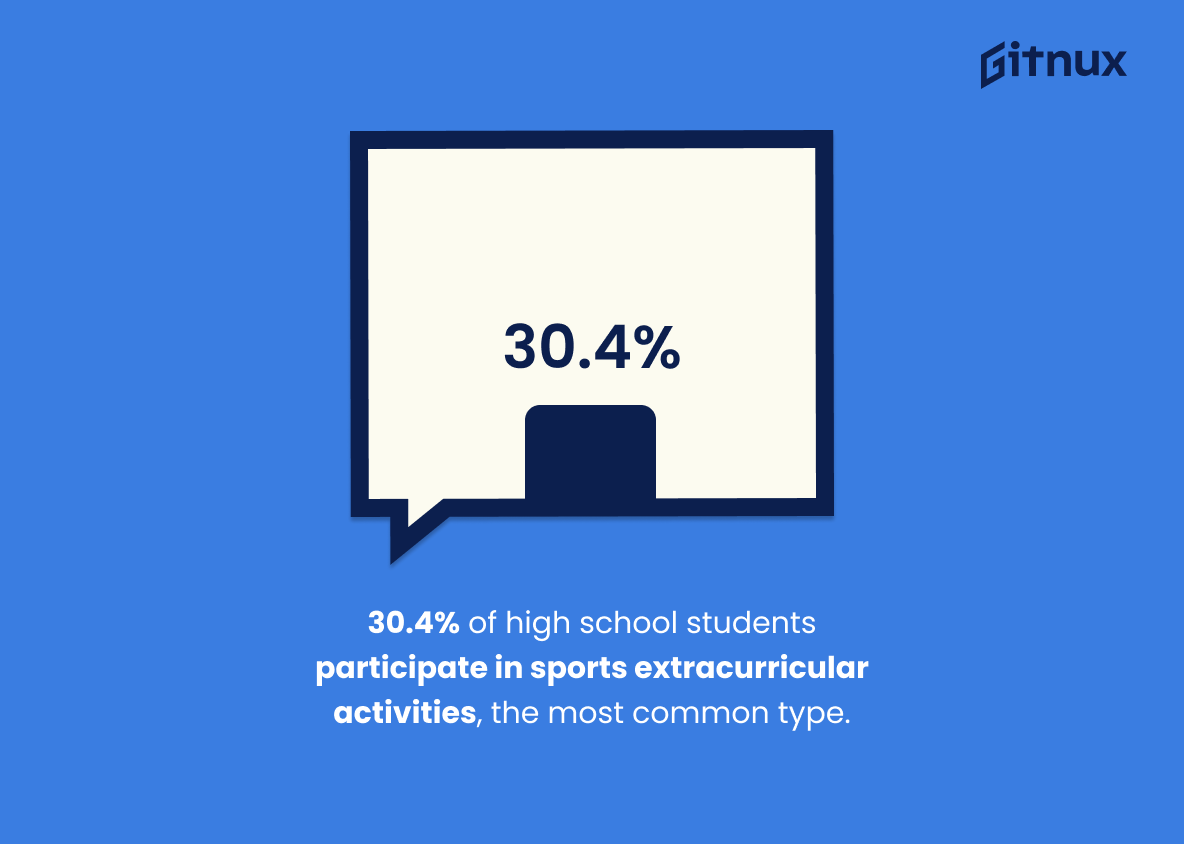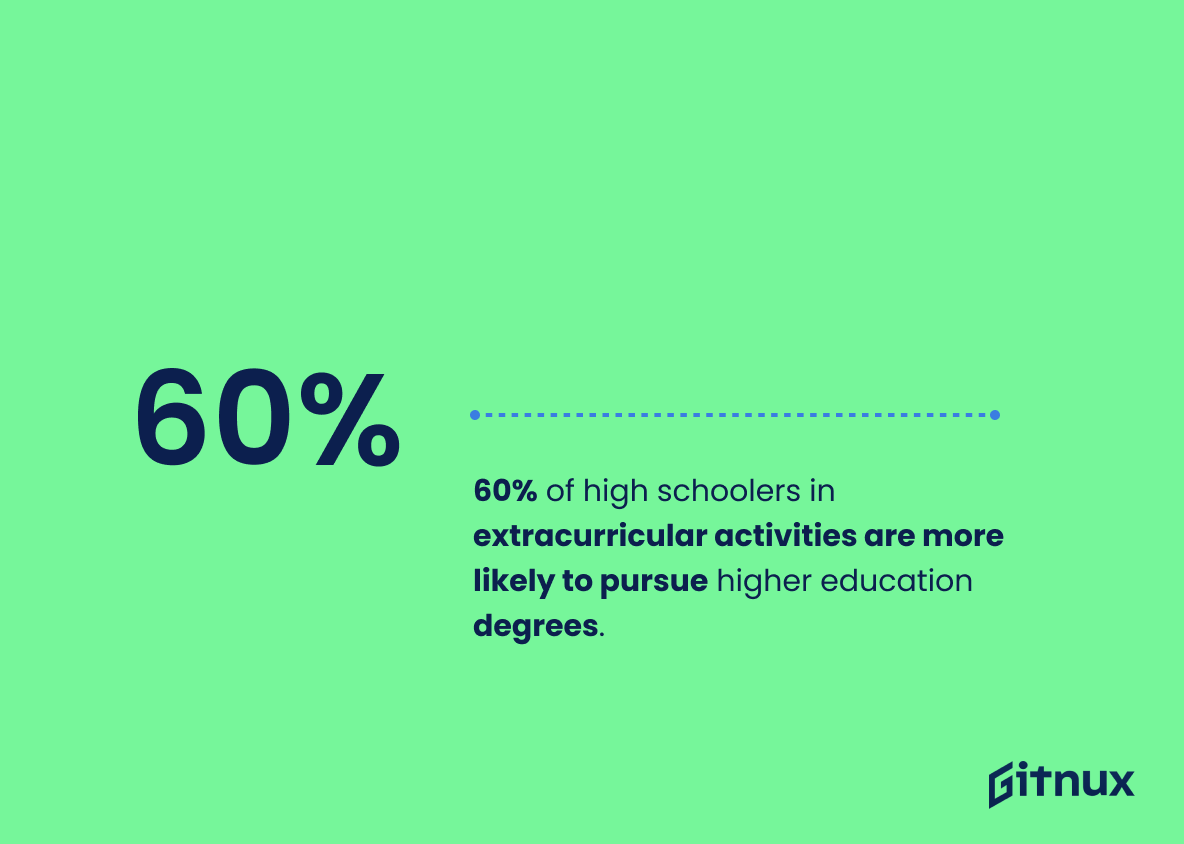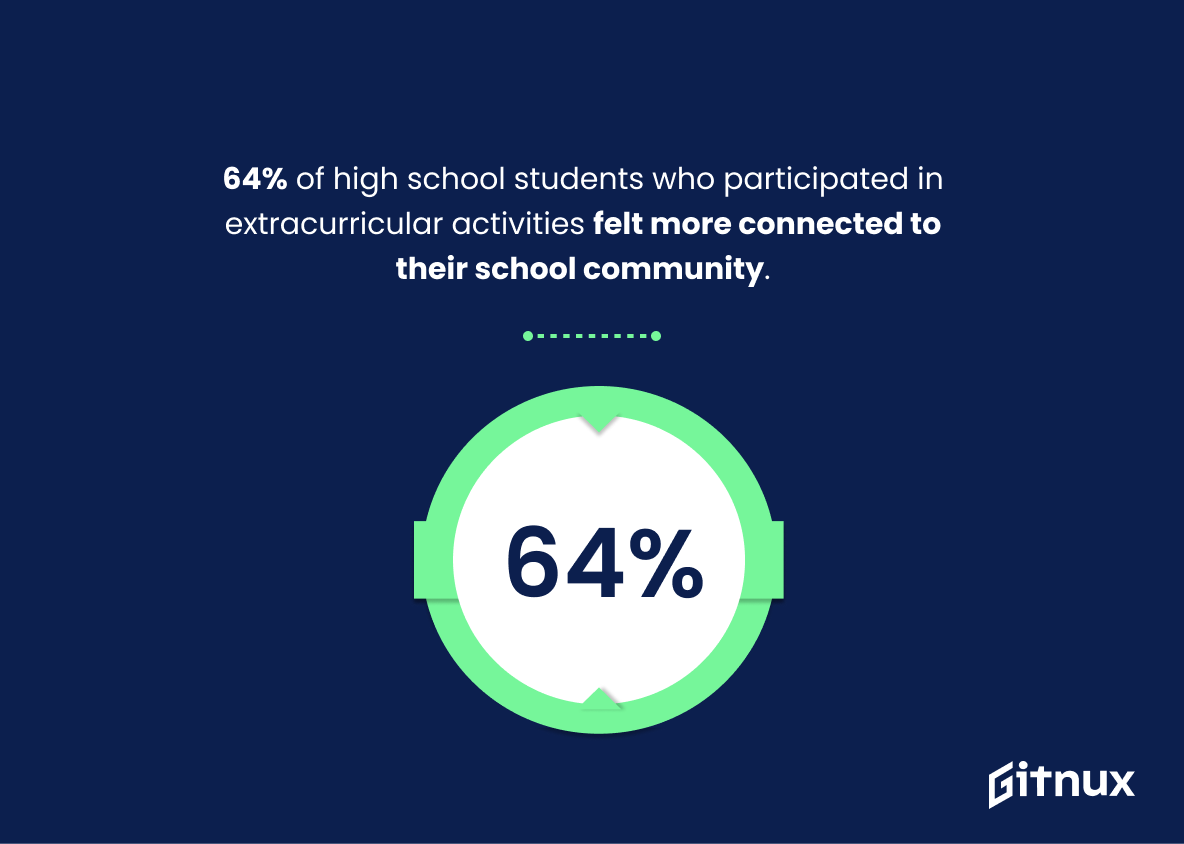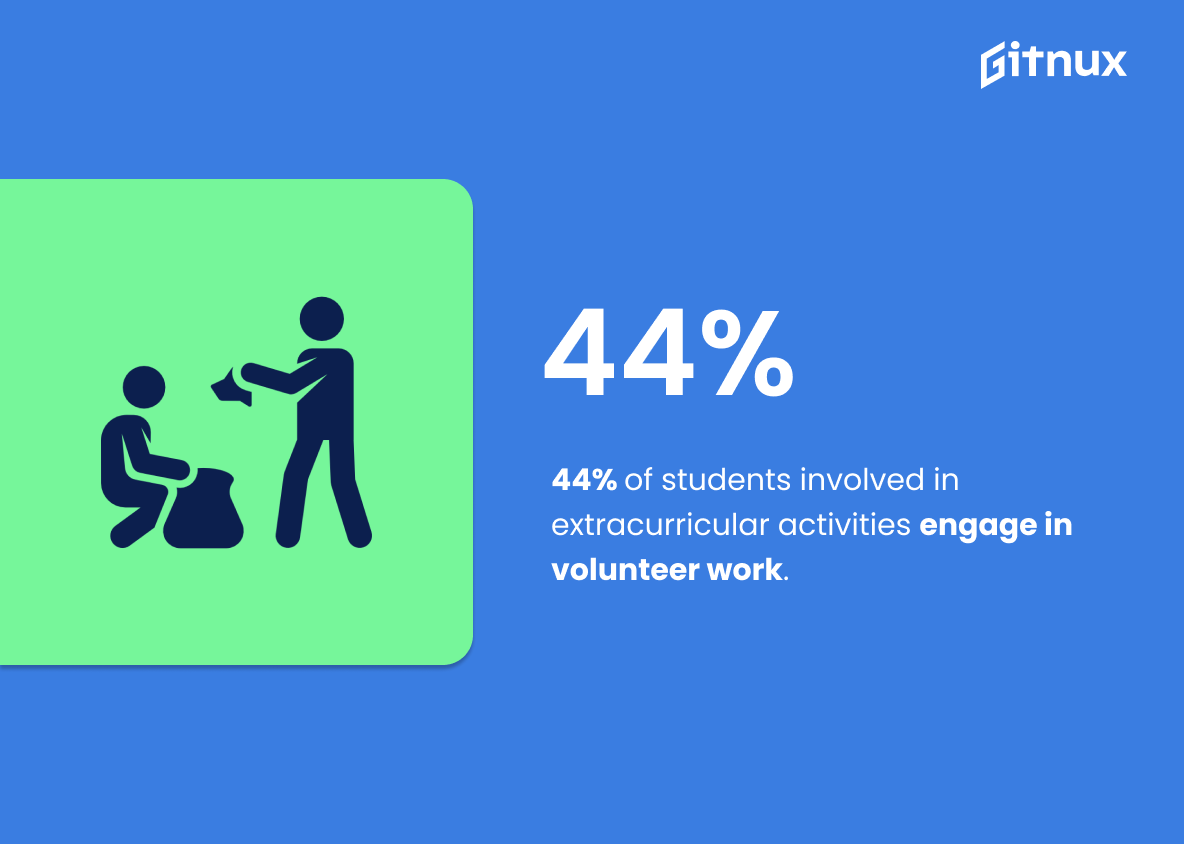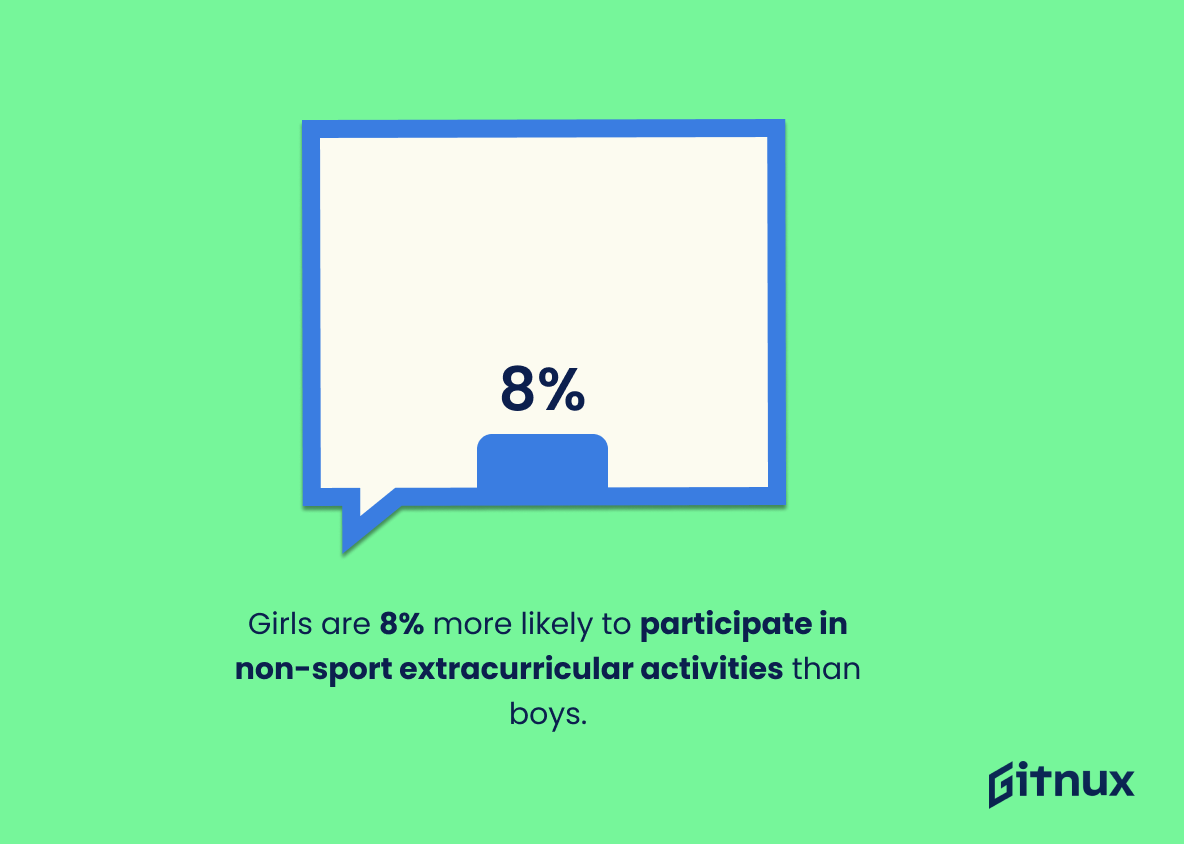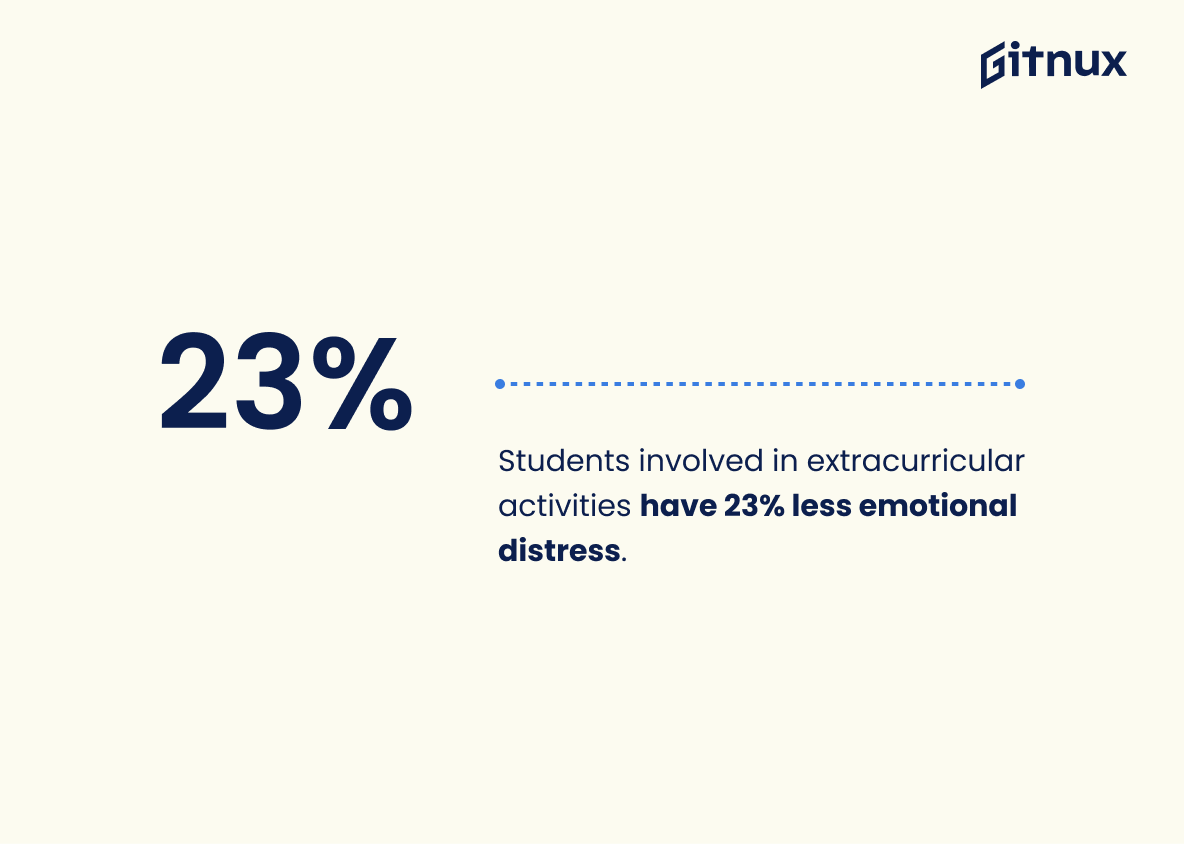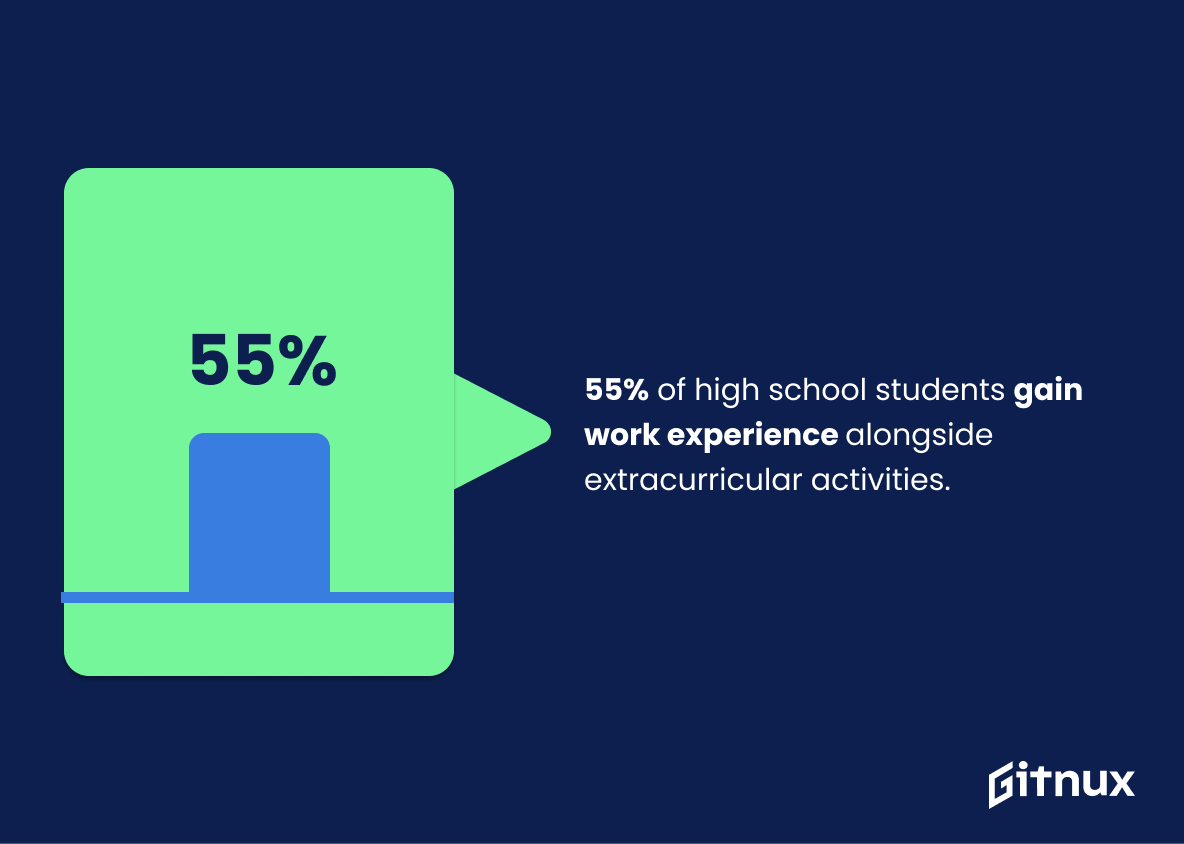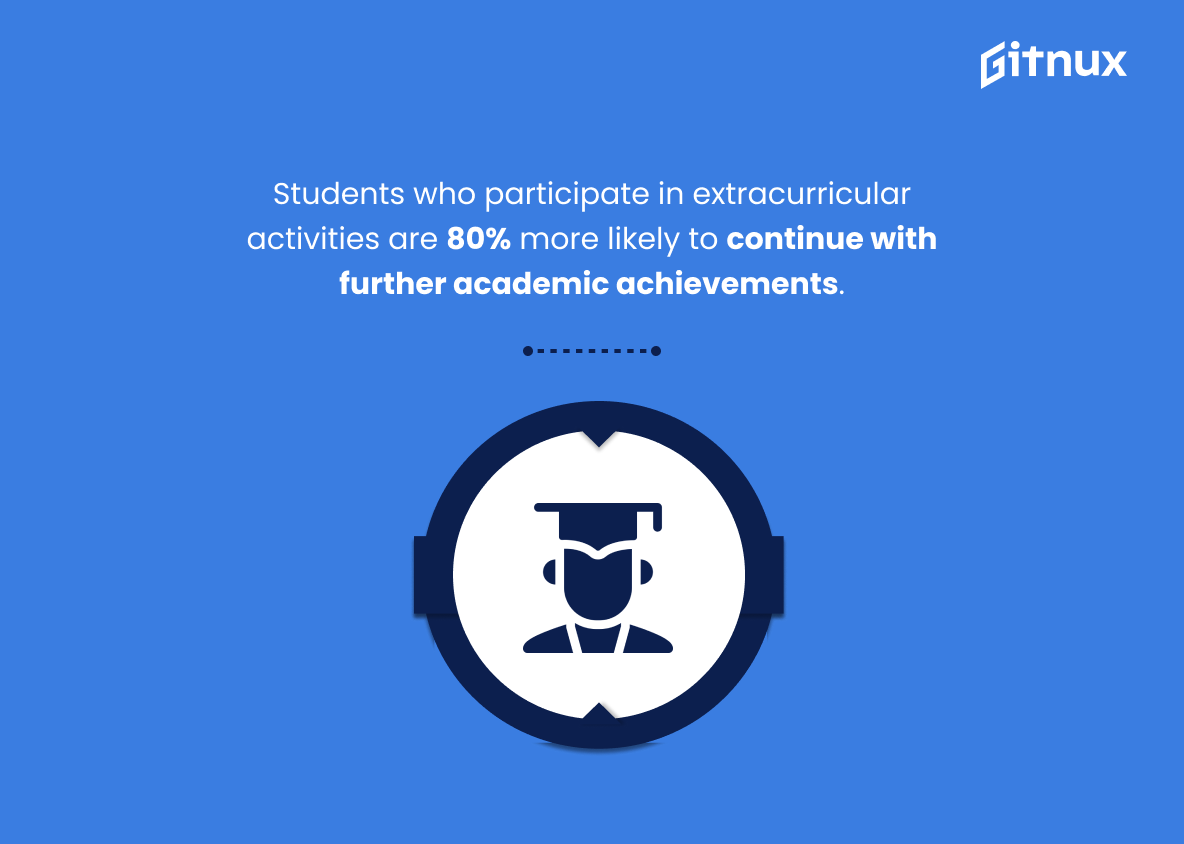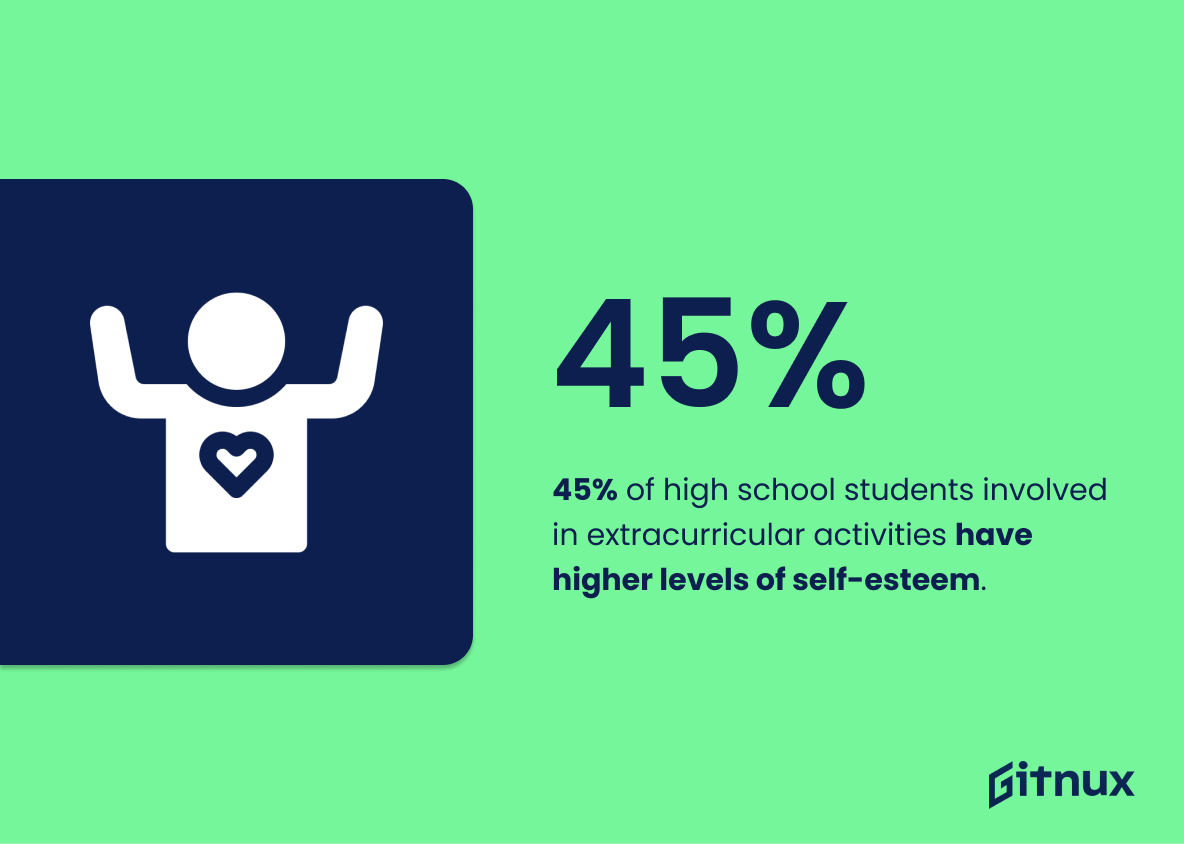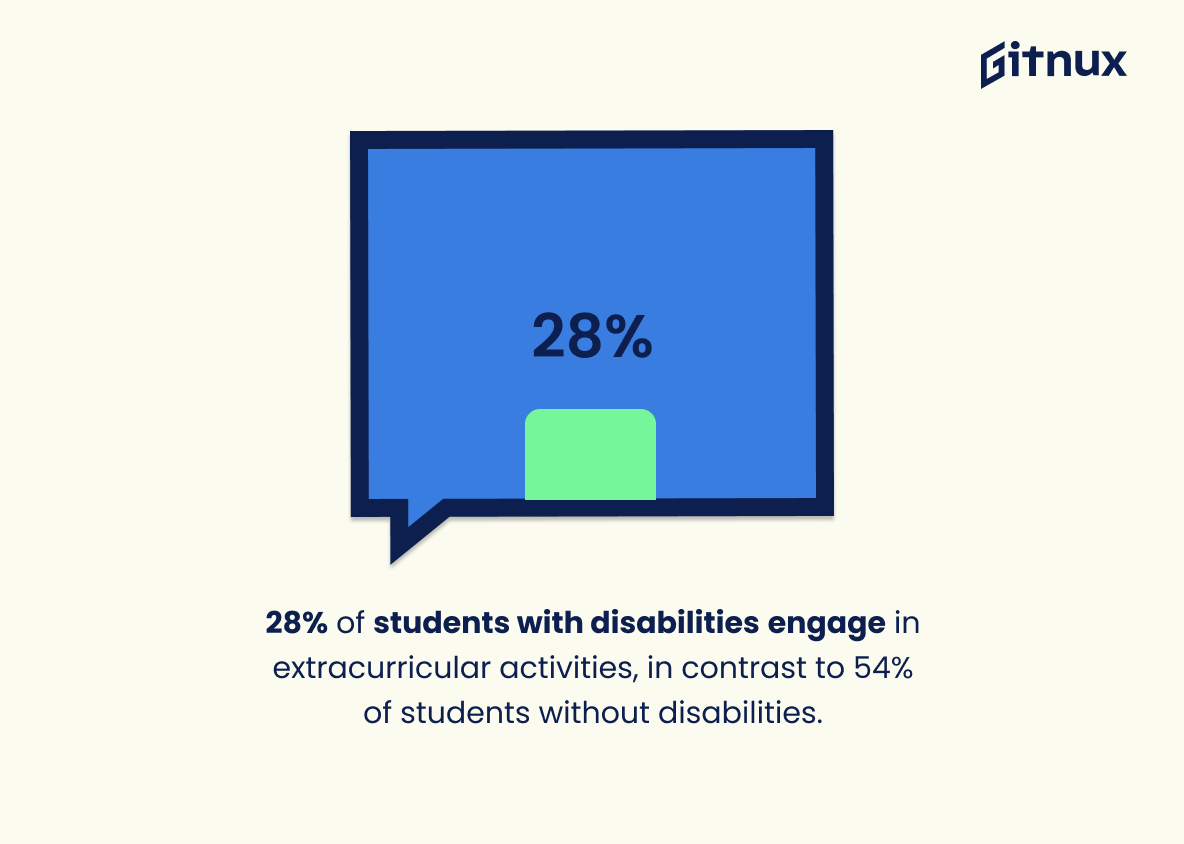High school extracurricular activities are an important part of a student’s educational experience. They provide students with the opportunity to explore their interests, develop new skills, and build relationships that can last a lifetime. But did you know that participating in extracurricular activities also has many positive impacts on academic performance? In this blog post, we will be exploring 20 statistics about high school extracurricular activities and how they affect students’ lives both inside and outside of the classroom.
This statistic is a testament to the importance of extracurricular activities in high school. It shows that a majority of students recognize the value of participating in activities outside of the classroom, and are taking advantage of the opportunities available to them. This statistic can be used to demonstrate the impact extracurricular activities can have on a student’s academic and personal growth, and can be used to encourage more students to get involved.
Students involved in extracurricular activities are 49% less likely to use drugs and 37% less likely to become teen parents.
This statistic is a powerful testament to the positive impact of extracurricular activities on students. It shows that students who are involved in extracurricular activities are less likely to engage in risky behaviors such as drug use and teen pregnancy. This is an important reminder that extracurricular activities can be a valuable tool for helping students stay on the right track and make positive life choices.
High School Extracurricular Activities Statistics Overview
Extracurricular activities have a positive impact on students’ graduation rates, with an 18-percentage-point increase for low-income students and a 39-percentage-point increase for high-income students.
This statistic is a powerful testament to the importance of extracurricular activities in helping students reach their educational goals. It shows that, regardless of income level, students who participate in extracurricular activities are more likely to graduate than those who do not. This is an invaluable insight for parents, teachers, and administrators looking to ensure that all students have the best chance of success.
30.4% of high school students participate in sports extracurricular activities, the most common type.
This statistic is significant in the context of a blog post about High School Extracurricular Activities Statistics because it provides a clear indication of the prevalence of sports extracurricular activities among high school students. It demonstrates that a large portion of high school students are engaging in sports-related activities, making it the most popular type of extracurricular activity. This statistic can be used to further explore the impact of sports extracurricular activities on high school students and the importance of providing access to these activities.
60% of high schoolers who participate in extracurricular activities are more likely to pursue degrees in higher education.
This statistic is significant in the context of a blog post about High School Extracurricular Activities Statistics because it demonstrates the positive impact that extracurricular activities can have on a student’s academic future. It shows that students who participate in extracurricular activities are more likely to pursue higher education, which can open up a world of opportunities for them. This statistic can be used to encourage students to get involved in extracurricular activities and to demonstrate the importance of these activities in helping students reach their academic goals.
Students involved in extracurricular activities have a 19% higher GPA compared to non-participating students.
This statistic is a powerful indicator of the positive impact that extracurricular activities can have on a student’s academic performance. It shows that students who take part in extracurricular activities are more likely to have higher GPAs than those who do not. This is an important point to consider when discussing the importance of extracurricular activities in high school, as it demonstrates that these activities can have a direct and positive effect on a student’s academic success.
64% of high school students who participated in extracurricular activities felt more connected to their school community.
This statistic is a powerful indicator of the positive impact extracurricular activities can have on a student’s sense of belonging and connection to their school community. It demonstrates that taking part in extracurricular activities can be an effective way to foster a sense of community and belonging among high school students. This is an important point to consider when discussing the importance of extracurricular activities in high school.
44% of students involved in extracurricular activities engage in volunteer work.
This statistic is a testament to the power of extracurricular activities in inspiring students to give back to their communities. It shows that when students are given the opportunity to explore their interests and passions, they are more likely to use their newfound knowledge and skills to help others. This statistic is a reminder of the importance of extracurricular activities in developing a sense of social responsibility in young people.
Girls are 8% more likely to participate in non-sport extracurricular activities than boys.
This statistic is significant in the context of a blog post about High School Extracurricular Activities Statistics because it highlights the gender disparity in participation in non-sport extracurricular activities. It suggests that girls are more likely to take part in activities outside of sports, which could be indicative of a larger trend in the way girls and boys are encouraged to participate in different types of activities. This statistic could be used to further explore the differences in the types of activities that boys and girls are encouraged to participate in, and how this could be addressed to create a more equitable environment for all students.
Students involved in extracurricular activities have 23% less emotional distress.
This statistic is a powerful reminder of the positive impact extracurricular activities can have on students’ mental health. It highlights the importance of providing students with opportunities to engage in activities outside of the classroom, as it can help to reduce emotional distress and create a healthier and more balanced lifestyle.
55% of high school students undertake work experience to supplement their extracurricular activities.
This statistic is significant in the context of a blog post about High School Extracurricular Activities Statistics because it demonstrates the importance of work experience in the lives of high school students. It shows that a majority of students are taking the initiative to gain valuable skills and knowledge outside of the classroom, which can help them to become more well-rounded individuals and better prepare them for the future.
Students who participate in extracurricular activities are 80% more likely to continue with further academic achievements.
This statistic is a powerful indicator of the positive impact that extracurricular activities can have on a student’s academic success. It shows that students who take part in extracurricular activities are more likely to continue their academic pursuits, which can lead to greater success in the future. This statistic is an important reminder of the importance of extracurricular activities in helping students reach their full potential.
45% of high school students involved in extracurricular activities have higher levels of self-esteem.
This statistic is a powerful indicator of the positive impact that extracurricular activities can have on high school students. It suggests that participating in extracurricular activities can help to boost self-esteem, which is an important factor in overall wellbeing. This is an important point to consider when discussing the benefits of extracurricular activities for high school students.
28% of students with disabilities participate in extracurricular activities compared to 54% of students without disabilities.
This statistic highlights the disparity between students with and without disabilities when it comes to participating in extracurricular activities. It is a stark reminder that students with disabilities are not given the same opportunities to participate in activities outside of the classroom as their peers without disabilities. This statistic is an important reminder that more needs to be done to ensure that all students have access to the same extracurricular activities.
Conclusion
The statistics presented in this blog post demonstrate the numerous benefits of high school extracurricular activities. From increased academic performance to improved self-esteem, these activities have a positive impact on students’ lives and future prospects.
The data also shows that participation rates vary among different groups, with girls being 8% more likely to participate in non-sports related activities than boys and 28% of students with disabilities participating compared to 54% without disabilities. Overall, it is clear that engaging in extracurriculars can be an invaluable experience for all types of high schoolers.
References
0. – https://www.mdrc.org
1. – https://www.bls.gov
2. – https://www.childtrends.org
3. – https://www.pubmed.ncbi.nlm.nih.gov
4. – https://www.ncbi.nlm.nih.gov
5. – https://www.tandfonline.com
6. – https://www.researchgate.net
7. – https://www.nces.ed.gov
8. – https://www.youth.gov

